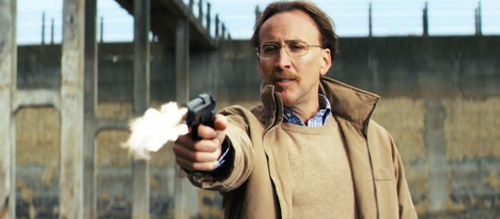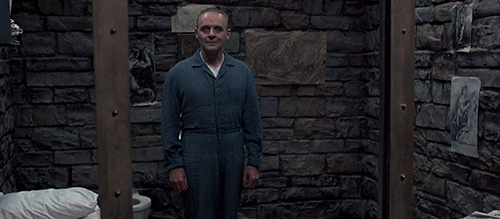Sam Sewell-Peterson’s 5 More of the Best Character Introductions in Movie History
How a character is first introduced to a film audience is key. Whether it’s the protagonist or antagonist, a colourful supporting character or a one scene bit player, you’ll have to remember these moments and every single thing we learn will inform the story to be told on film from that point on. These scenes teach us to love, hate or love-hate these characters in both subtle and obvious ways, and make us inclined to spend more time getting to know them. Five more character debut scenes that really stick in the mind follow below.
1. Mindy & Damon McCready
Kick-Ass (2010)
Since it has arguably been Hollywood’s favourite genre over the past decade, we’re all used to the usual superhero movie character arcs, but Matthew Vaughn’s Kick-Ass was anything but the usual. For a start, the titular hero (Aaron Taylor-Johnson) is an ineffective super-failure for much of the film’s runtime and most of the actual crimefighting is handled by a potty-mouthed twelve year-old. Said murdery minor gets a pretty memorable introduction out of costume, long before she calls a room full of armed drug dealers the c-word and proceeds to meticulously dismember them.
Mindy (Chloe Grace Moretz) and Damon McCready (Nicolas Cage) are not your average father and daughter. We first meet them standing in the middle of some waste ground, reeling off gun statistics. Then, without warning, Damon raises his own sidearm, assuring his daughter that “You’re gonna by fine, baby doll” and shoots his daughter in the chest, sending her flying off her feet. Turns out this happy family are deadly vigilantes by night – known as Big Daddy and Hit-Girl – and that Damon is simply preparing his beloved progeny in case “some junky pulls a Glock”.
This scene becomes much more poignant later on after both masked crime fighters have taken considerable physical punishment from the bad guys and Mindy observes tearfully that being shot for real hurt much more than when her dad did it, “That’s because I used low-velocity rounds, child”. If you stop to think about it, what Damon is doing – indoctrinating his child to take part in his campaign of revenge – is ghastly, completely morally unforgivable. And yet, you never doubt for a moment that their father-daughter relationship is built on genuine love and affection – they would do anything for one another and have had to stick together through a lot of tough times with the untimely death of Mindy’s mother and Damon’s incarceration on false charges. They just want to create a world where they can be a normal family, safe and secure, but they’re prepared to do truly awful things to even more awful people to ensure that. It’s this striking, tonally juxtaposed scene that makes us remember Big Daddy and Hit-Girl, as well as the family they are behind the masks.
2. Dr. Hannibal Lecter
The Silence of the Lambs (1991)
Who doesn’t love a compelling monster? Someone to love to hate?
Real-life serial killers are terrifying because they’re impossible to understand. One of the great (possibly the greatest of all) fictional killers is Dr Hannibal Lecter. Created by author Robert Harris for “Red Dragon”, Lecter is terrifying on the page and on screen because he’s completely unknowable and also seems like the last person who’d be capable of killing someone. He’s cultured, refined, articulate and academic, but a creature of pure evil lies beneath.
In Jonathan Demme’s Oscar-winning The Silence of the Lambs, FBI trainee Clarice Starling (Jodie Foster) is sent by her superiors to interview the infamous Dr Hannibal “the Cannibal” Lecter (Anthony Hopkins) in a Baltimore asylum so the Bureau can develop a psychological profile for an on-the-loose serial killer known as Buffalo Bill. Robert Harris once admitted that his own creation terrified him, that he was afraid to write more Hannibal stories lest the character take him to places he didn’t want to go. Despite being a fictional character, he seemed self-aware, even independent of his creator. In their series of interview scenes, the first of which serves as Hannibal’s introduction, Hopkins’ performance is chilling and charming; quite the dichotomy. From his mundane greeting of Starling (“Good morning”) as he stands demurely behind the glass of his cell, he is always in control. However careful she thinks she is being, he can see right through her from the start, amusedly catching her when she inadvertently shows her hand and tries to clumsily manipulate him to provide his expertiese: “Oh no no no, you were doing fine…” he says.
Much like Clarice, we as an audience have to summon all of our willpower to not be taken in by Hannibal. That’s his power, evident from this very first scene – his ability to get in your head and alter your perception, to seem to know you better than you know yourself. We’re in Clarice’s inexpensive shoes as she walks down the asylum corridor and the camera tracks her movement, heart in our mouth as we wait for that now iconic reveal; the moment the monster’s cage will come into view. When the reveal does come, it’s relatively unremarkable and we can momentarily take a relieved breath and collect ourselves, only for the anxiety to returns not long thereafter as Hannibal begins to prod and poke Clarice. The wariness this creates towards this monster’s intelligence and cunning is present throughout the rest of the film.



